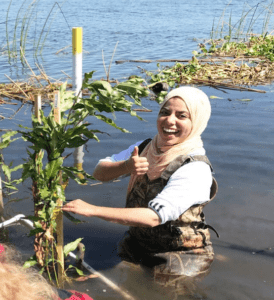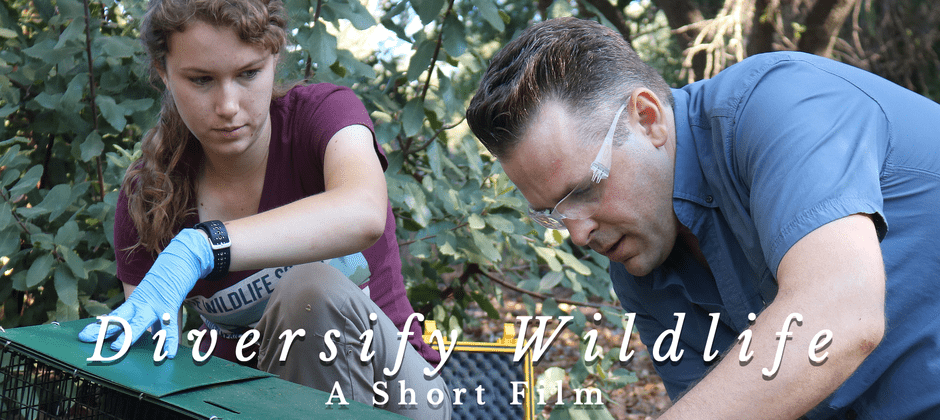Share this article
Western Section film depicts diversity in the profession
Many wildlife professionals spend their entire careers worrying about species diversity, but what about human diversity in the wildlife profession?
“[Group from different backgrounds and experiences] think differently in terms of problem solving and solutions,” said TWS member and chair of the diversity committee in the Western Section Bayan Ahmed. “And it really enhances productivity.”
The board of the Western Section approached Ahmed to put a video together about diversity. She decided to follow wildlife professionals and students into the field to show not only people’s diverse backgrounds, but the diverse projects those people are working on. The important thing, she said was showing the wildlife professional wasn’t just what you see on Animal Planet. “It’s field work, but it’s also lab work. It can also be teaching. There are just so many things, and that’s something I wanted to capture in the film.”
Then, she and her colleagues interviewed people on camera about their experiences with barriers in the field as well as how they incorporate diversity in their job.

Ahmed led the charge in creating the film that was debuted at the TWS Western Section conference. Courtesy Bayan Ahmed
The film had several goals. One was to talk about how diversity has increased in the field, even though improvements are still needed. Another goal was to inspire up-and-coming wildlife professionals by showing them what jobs they can do as well as showing examples of diverse, inspirational people in the profession.
Ahmed and her colleagues debuted the film titled Diversify Wildlife at the 2019 TWS Western Section conference. Then, they had a panel where they answered audience questions.
Ahmed said she has personally faced challenges as a woman and person of color. “We are not growing up thinking wildlife can be a career,” she said. “I know my parents didn’t know what zoology even really was when I told them I wanted to be a zoologist. Not being exposed to that as a child, I had to really do my own research.” Ahmed said the wildlife field wasn’t something her parents had a background in. She also didn’t know any other people like her in the profession. When she met with her counselor in community college, she learned about the wildlife profession, and learned that’s what she truly wanted to do.
Ahmed said she hears from others in the field that one big challenge is unpaid internships and volunteer positions. Those positions help start wildlife careers, but for many people with less privileged backgrounds, these types of positions aren’t feasible. “That’s one of the biggest complaints we have seen,” she said. She also said people in urban cities are not as exposed to the natural world.
Ahmed said there’s less representation of females, people of color and the LGBTQ plus community. “It’s changing, but I feel that when a lot of people think of scientists, they think of the typical guy in a white coat. And this is just showing that there are different scientists out there and career paths that anyone can do. It’s really important.”
The next step is growing the section’s Instagram page, Ahmed said, showcasing people in science. She also wants to start a YouTube channel for the Western Section to show more diversity in the field.
“My team and I can’t tell everyone’s story,” she said. “It’s not our job to tell everyone’s story. If they tell it from their own perspective, that’s going to be most accurate and the most impactful.”
Watch the video below:
Header Image: The Western Section of The Wildlife Society created the film Diversify Wildlife. ©TWS Western Section








